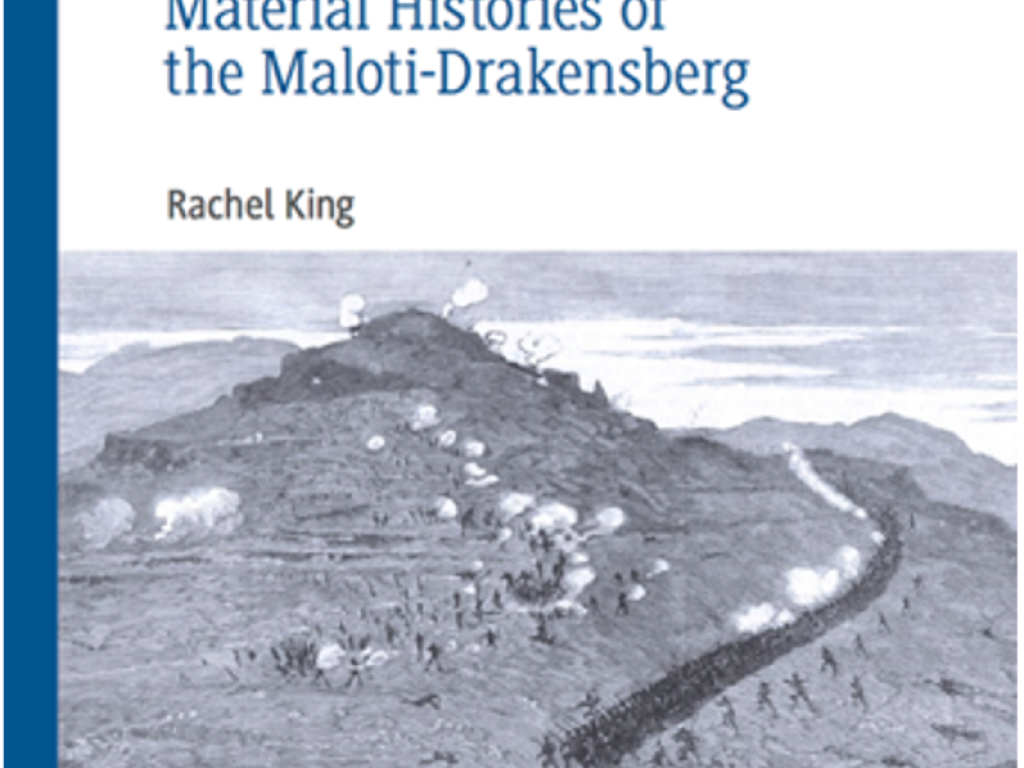Thinking archaeologically - Review of Rachel King’s Outlaws, Anxiety, and Disorder in Southern Africa: Material Histories of the Maloti-Drakensberg

Review by Ettore Morelli
Rachel King, Outlaws, Anxiety, and Disorder in Southern Africa: Material Histories of the Maloti-Drakensberg (London: Palgrave Macmillan, 2019)
What kind of history would an archaeologist write? As the readers of the Gazette know, this is no mere provocation for the APC. The discussion of theory, methodology, and the practicality of research across different disciplines is a core APC preoccupation. The question of writing history from an archaeological perspective, and vice versa – or how these academic disciplines can profit from a renewed communication between the two fields – was animatedly discussed during the Research Development Workshop held online on 29 and 30 September and 1 October 2020.
Sometimes, answers to these theoretical questions come in the shape of a hardcover book. Rachel King’s Outlaws, Anxiety, and Disorder in Southern Africa: Material Histories of the Maloti-Drakensberg, published in 2019 by Palgrave Macmillan, is a proof that, indeed, archaeologists can write excellent history. In little less than 300 pages, King – who presented a draft chapter to the APC Research Development Workshop of March 2018 – leads the reader to the maze of streams, valley bottoms, rocky shelters, and mountain tops of the Maloti Drakensberg, showing us at least seven paths to a distant historical event that, for some time in 1878, seized the headlines in Cape Town: Moorosi’s War, fought by colonial and Lesotho forces against the evanescent leader of the Baputhi, who had “rebelled” and defended his mountain to the very end.
The book delivers a fundamental investigation of African notions concerning landscape and violence, demonstrating that mountains, and raids, are not all alike. Thus, the reader is offered a delicate deconstruction of colonial anxieties about movement, and what they regarded as disorder, banditry, hostile landscapes and crime-prone communities. Two well-known figures – for the small cohort of Lesotho specialists – amateur historians Joseph Millerd Orpen and David-Frédéric Ellenberger, are joined by Sekhonyana Nehemiah, son of Moshoeshoe, oral historian, diplomat, source and scholar, finally introduced to the stage of academic research. The mountains of Herschel and Lesotho are presented as the stage of the clever political strategies and able military tactics of a community, the Baputhi, capable of building a vast network of outposts and shelters, and able to live for decades in between the cracks of colonial and African states.
The book plays with time, temporality, and timing, in a refreshing way, setting a different speed for the narrative of each chapter and thus painting seven different “vignettes”. Slower and quicker processes are the subjects of the analysis: “things”, environment and landscape in the first two chapters; archival sources and historiography in the third; human settlements in the fourth; violence, disorder, and warfare in the fifth; the rebellion of Moorosi in the sixth; and contemporary heritage in the seventh chapter. These different threads are then pulled together in the eighth and final chapter. The arguments touched on are manifold and scholars from various fields of study will find innovative ideas and updated views in this work.
King acknowledges that the choice of archives and – by extension – libraries as fieldwork might seem odd for an archaeologist. In this respect, her work on the collections of the Morija Museum and Archives, in Lesotho, is particularly worthy of praise. Indeed, she claims, archival research is an integral part of the discipline, as much as the physical landscape and the material remains that constitute a more down-to-earth image of the job. Her approach to source analysis and historiography shines through the book as one of its main theoretical gains.
She analyses brilliantly what can perhaps be considered the local “prehistory” of archaeology, an intellectual activity that she calls more elegantly “thinking archaeologically”. The traces of human communities, the landscape they inhabited, and the ruins they left behind have been interrogated over time by colonial farmers, imperial officers, missionaries, and historians to name a few categories. In her words, these actors “use the material world and its backstories to create narratives about what is going on around them”, especially in such unstable contexts. Explaining that, before professional archaeologists, several historical actors brought together these varied sources and “thought archaeologically” is a great achievement, and opens the way to the refined study of how each of these views differed, slightly or greatly, from the others. Also for this reason, Rachel King’s Outlaws will surely remain a source of inspiration for many years to come.